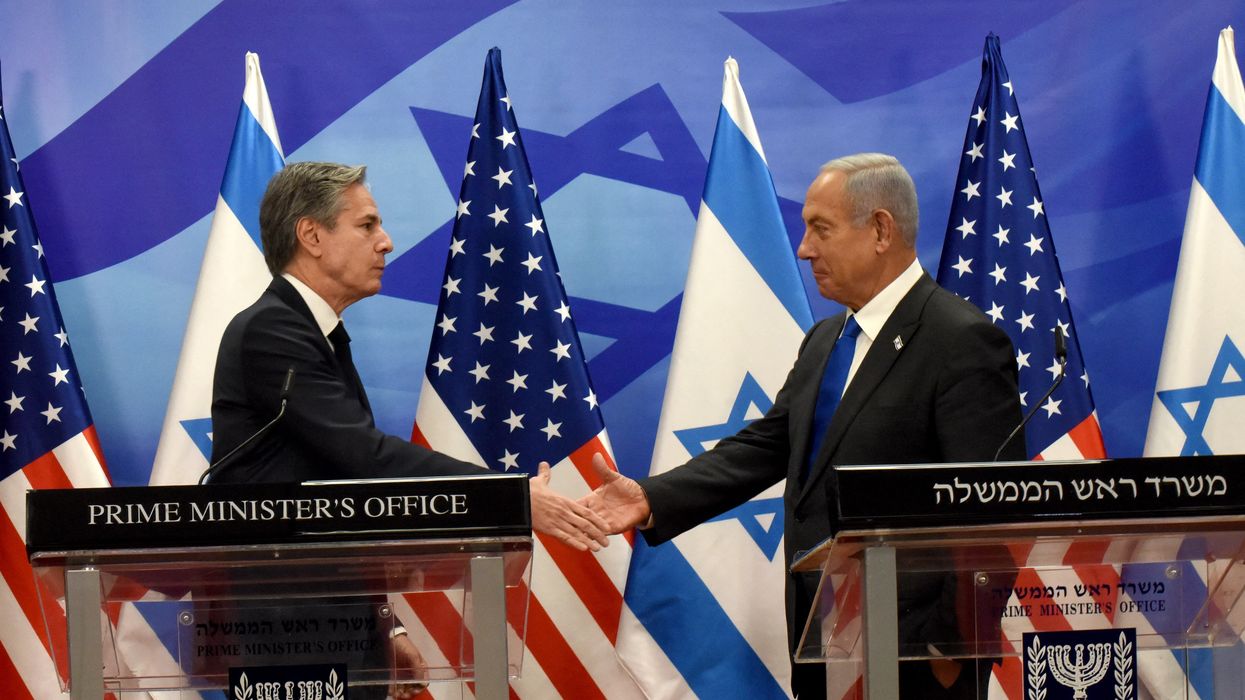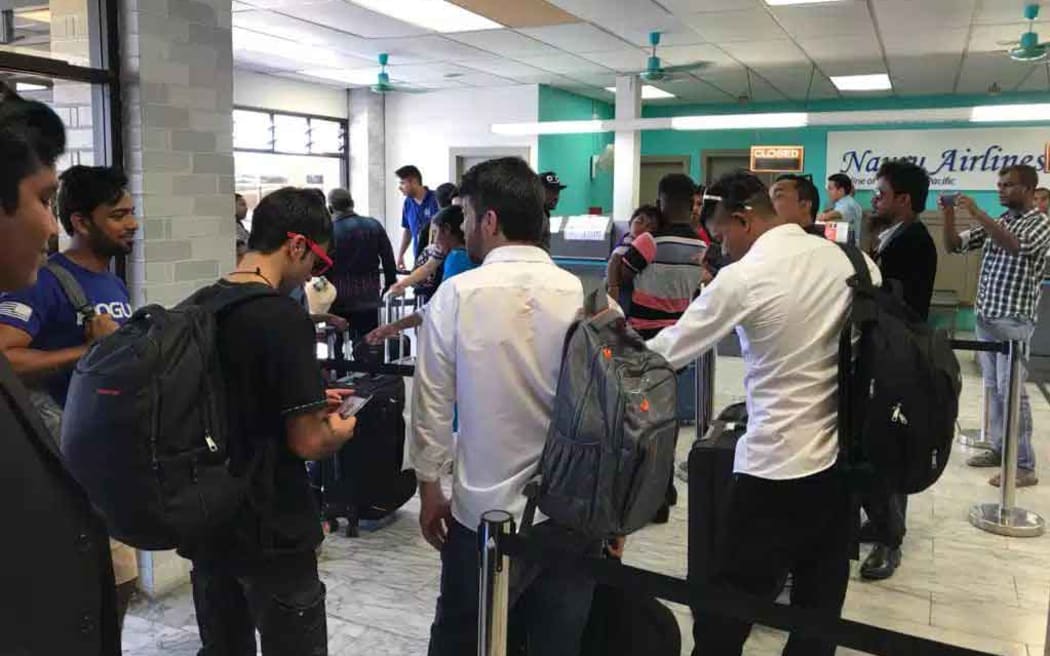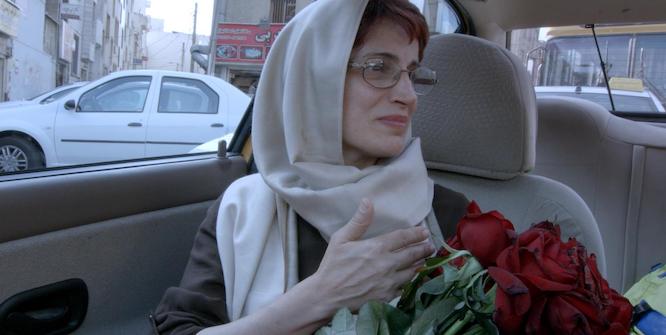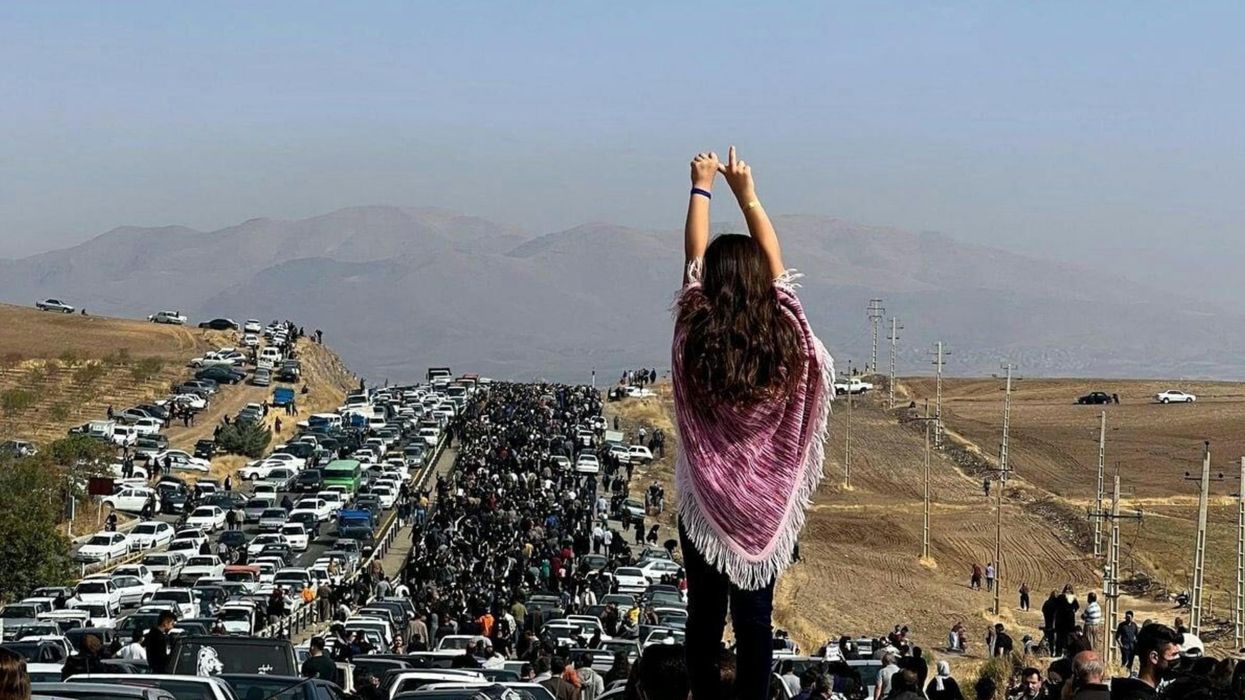From time to time, academics, and journalists from the Global South, express their disappointment with what they call Western progressive intellectuals. These “progressive intellectuals” are accused of criticizing the imperialist policies of their governments and the propagandist nature of the mainstream media in general terms while relying on the same misinformation and disinformation that the media disseminate and endorse the same imperialist policies that their governments pursue in the Global South, especially against the states and nations which resist Western hegemony.
The response, of these so-called progressive intellectuals to recent socio-political unrest in Iran, expressed in two statements; Listen to the Voices of a Feminist Revolution in Iran and Faculty for Women, Life, Freedom, are a case in point. These statements are the responses of two groups of Western academics and feminists to the demonstrations which, after the death in custody of the young Iranian woman Mahsa Amini on 16 September 2022, took place in different Iranian cities. The statements indicate that there must be a grain of truth in the claim of the complaining academics and journalists from the Global South.
While the peaceful demonstrations were turning into riots and mob lynchings, these so-called progressive intellectuals from the global North took the coordinated and ferocious misinformation and disinformation campaign about the events in Iran as indisputable facts. The misinformation and disinformation campaign was first disseminated by the Persian TV Channels which were financed by Europe and the United States and their milking cow, Saudi Arabia, social media, and Western mainstream media. Relying on such a misinformation and disinformation campaign and in unison with their ministries of foreign affairs, these so-called progressive intellectuals interpreted the protests in Iran — which barely gathered a few hundred people in one place — either as a “feminist revolution” in the making that would overthrow the “ruling regime” or an uprising in which “millions of Iranians” have poured into the streets for their basic human rights, the same rights that these “intellectuals” take for granted in Western democracies.
While these progressive intellectuals would never consider any demonstration in the West as a threat to the legitimacy of the governing structure of their countries, nonetheless based on the same misinformation and disinformation campaign on Iran, they not only call into question the legitimacy of the Iranian state in the name of solidarity with the Iranian people but predict its inevitable collapse soon. Regardless of the intentions of their signatories, the real function of the statements should be evaluated in relation to the dynamic geo-strategic role that the Iranian state plays in the West Asia region and its immediate region vis-à-vis the desperate efforts of the Western governments under the leadership of the United State to protect and preserve their supremacy in the region as a component of their global hegemony.
The main message of the misinformation and disinformation campaigns on Iran that misled Western “progressive intellectuals” was that the political system in Iran was on the verge of collapse, that despite the relentless suppression of the demonstrators and mass killings committed by Iranian security forces, the “brave demonstrators” were pouring into the streets by millions, and that Iranian statesmen were escaping the country and taking refuge in other countries. Omid Djallili, the British comedian, claimed that Iran’s leader escaped to Venezuela. According to the misinformation and disinformation campaigns, the revolution that had begun in the name of “Women, Life, Freedom” in Iran would, with the help of “the international community,” overthrow the “Iranian regime” in a matter of days or weeks. We know that “The international community” consists of Western governments and their allies, Western NGOs, movie stars, musicians, and “progressive intellectuals.” The misinformation and disinformation campaign against Iran represented the thugs who lynched, murdered, and assaulted unarmed policemen and ordinary people accused of siding with the Iranian government, and burned public properties, as peaceful protesters whose only crime was opposing the “Iranian regime.” This happened even though these “peaceful protesters” took videos of their crimes which were published instantly on the Persian broadcasts funded by Saudi Arabia and Western governments and then appeared in social media. Thanks to their Iranian native informers, the Western “progressive intellectuals” took every piece of misinformation and disinformation as a fact.
The first statement, Listen to the Voices of a Feminist Revolution in Iran, by a group of “feminist activists and academics” and their native informers was published in late September. The statement claimed that “we are witnessing a feminist revolution in Iran” to end the violence of “a theocratic regime” against “the marginal bodies.” The statement which came in the early days of the protests complained about the silence of “the broader academic and activist community around the world” on the event and called upon Western media and academia to make the ongoing “feminist revolution” in Iran more visible. These “academic-feminist activists” describe the “feminist revolution” in Iran as a revolution against a regime that had made women invisible in the public sphere. Hence, they remind the “progressive voices in the Global North” of their ethical and political responsibility and that “the long history of colonial oppression, [and] racism” and “the neo-orientalist approaches” should not prevent them from “taking a full stance of solidarity with the struggles of people in the Middle East and other Muslim-majority countries.” The statement urges the “progressive voices in the Global North” to recognize not only the epistemic and political subjectivities of the people in these regions in general but recognize as well the epistemic and political subjectivity expressed in the “Iranian feminist and queer resistances” and its role in the ongoing “feminist revolution in Iran.” The “academic-feminist activists” urge “the international feminist communities to build a transnational solidarity network with “women and marginalized bodies in Iran.” They ask the progressive forces in the Global North to recognize the “queer-feminist, anti-capitalist, and anti-fascist” character of the current revolution as the struggle of the marginalized bodies for their emancipation from the “Islamic theocracy.”
The second statement, Faculty for Women, Life, Freedom, issued in early October, by a group of scholars whose ideas and visions represent the “progressive voices” from the Global North, called on academics from different parts of the world to show their solidarity with the Iranian “protesters” by boycotting Iranian universities and institutions of higher education. The statement considers the protests as an uprising of the Iranian people that fight in the name of Women, Life, Freedom for the realization of their basic human rights. The subsequent senseless violence and hatred that were expressed toward anyone who criticized the so-called feminist revolution or uprising revealed that the slogan “Woman, Life, Freedom” were just words without any references to things on the ground, words which were put together to impress people who had no clue of the degree of the hatred expressed, the thirst for acts of revenge expected, the violence exerted and the crimes committed under the banner of this pretty slogan. According to the statement, in the name of Women, Life, Freedom, millions of “brave, courageous, and creative” Iranian protesters came into the streets and university campuses, to challenge “the theocratic dictatorship” and to demand “their basic human rights, dignity, and justice.” The protesters who came “from a range of social classes and regions of the country” refuse, according to the statement, to be cowed by intimidation and repression. Hence, despite their suffering through “gruesome beatings, killings, abductions, and disappearances,” they have created a nationwide uprising. In solidarity with the struggles of the Iranian people “for freedom, equality, and democracy,” the statement calls upon students and scholars around the world to condemn the Islamic Republic of Iran. It asks academics from various countries and continents “to prevent the state institutions of the Islamic Republic and representatives thereof from having any presence in global higher education, be it physically or virtually.” Furthermore, the statement asks academics around the world to use their “influence and capacities” to not only boycott “events and initiatives… backed by the Iranian state or in which officials of the Islamic Republic play an active part” but create an international network to grant “scholarships and fellowships for precarious students and scholars at risk in Iran.” A few days after the release of this statement, the signatories who had realized the scandalous contents of the statement and its unconditional endorsement of the murderous economic sanctions implemented by the US and its Western allies against the Iranian state and people, a postscript was added to the statement. The postscript says that “the “boycott” aspect of the statement “only relates to active and sitting officials holding office in the executive, legislative, judiciary, Office of the Supreme Leader, security, and intelligence apparatuses.” The problem is that those who are imposing economic sanctions on Iran can find the necessary connections between all Iranian scholars and their educational and research institutions to the Iranian state institutions.
It is worth noting that while Jacques Ranciére and Judith Butler are co-signers of the first statement, Angela Davis, Cornel West, Etienne Balibar, Slavoj Žižek and Yanus Varoufakis are among the signatories of the second statement. However, many of the scholars who have signed the statement are originally from the Global South and Iran, who live in the Global North. This group of scholars is aware of the ongoing geo-strategic game in the region with the United States and its Western and regional allies on one side and Iran on the opposite side as the key players in the game. While the first statement calls upon the “progressive voices in the Global North” to show their solidarity with the protesters, the second statement shows its solidarity with the protesters by calling on academics from different parts of the world to boycott Iranian state-affiliated academic institutions and exclude Iranian academics from the global higher education. The signatories of both statements would like to call themselves academic activists and regard each other as intellectuals in the way Sartre understood the term in the 1960s. For Sartre, intellectuals are the technicians of practical knowledge who discover and expose the contradiction between the universality of their method of inquiry and the particularity of the dominant ideology. Only the technicians of practical knowledge who in their search for universality discover that universality does not exist but must be created, reinvent themselves as intellectuals because the intellectuals are aware that the dominant ideology is not “a set of clearly defined propositions” but actualized in social and political events.
A great number of the technicians of practical knowledge in France turned into intellectuals during the Dreyfus Affair, because they realized that captain Dreyfus was the victim of the French racist ideology that dominated both the media and the legal institutions. For Sartre, the technicians of practical knowledge turned into intellectuals when in their search for truth and universal knowledge that was supposed to serve the entire humanity, discovered the contradiction between their search for truth and universal knowledge and their practice of knowledge production which served the interests of the ruling class. Since this theoretical contradiction reflects the existing social contradictions between the exploiting few and the exploited masses within the capitalist and imperialist systems, the technicians of practical knowledge have two choices. Either they remain true to their search for truth and universality and take the position of the oppressed masses or continue their contribution to the dominant ideology that safeguards the capitalist and imperialist interests. Now, the question is whose side the signatories of the above mentioned statements are taking? Do they consider themselves to be the progressive forces or intellectuals whose politics is a continuation of their search for truth and universality? The above mentioned statements are not the reflection of the technicians of practical knowledge on a historical event, because a historical event does not happen by naming the coordinated operations of misinformation and disinformation that have targeted Iran a “feminist revolution” or a popular “uprising.” They are the contributions of the contemporary technicians of practical knowledge in the West to the dominant imperialist ideology actualized in the propaganda operations against Iran. Since the knowledge produced in the statements by the “academic-feminist activists” and the “progressive voices in the Global North” on the so-called “feminist revolution” and popular uprising in Iran is a contribution to the rationalization of the imperialist adventure in West Asia.
Rather than a declaration of solidarity with the exploited and oppressed masses in the region, the statements are a gesture of solidarity with the Western Imperialist forces as the principal exploiters and oppressors. On the one hand, the second statement is a supplement to the economic sanctions imposed by the United State and other Western governments on the Iranian state and nation, to make Iran’s economy so unstable that the Iranian society implodes from within as a result of popular discontent and protests. On the other hand, the statement calls for support of the “students and scholars at risk” in Iran in form of student and research grants, while the signatories of the statement are fully aware that they can only depend on Western governments and entrepreneurs close to these governments to finance the “students and scholars at risk” projects. The fact is that both statements contribute to the ongoing imperialist strategy to force the Iranian state into a corner so that it gives concessions to the demands of the US and its allies regarding its peaceful nuclear technology, defense technology, and its political influence in the region. The US and its Western allies consider the Iranian state as the only state in the region, which have both capability and the will to challenge their hegemony in the region. Consequently, they welcome all the support they can get in their multilayered war against Iran. It does not matter whether the support comes from Saudi Arabia in form of money, or from “academic-feminist activists” or “progressive voices from the Global North.”
Since the early 1990s, the so-called progressive intellectuals or voices in the West have been convinced that Western liberal democracies/Global North have reached the end of history. They theorized the idea that the rest of the world or countries in the Global South, that lagged behind these democracies, would be able to overcome their democratic shortcomings either through revolutions or reform, either through bombs or education. Concepts such as feminist revolution and uprising for basic human rights, to which the signatories of the two statements refer, have been brought into the political discourse because the rest of the world is still in the cage of history, and its fate, unlike the West, is determined by the movement of history. In this regard, the Western academic-feminist activists, and the progressive intellectuals, together with their governments and their native informers who stand outside the historical time, act as the omnipotent subjects of the historical movement which is going on in the rest of the world and assign the epistemic and political subjectivity of whoever they want. While they represent small groups of cruel thugs as peaceful demonstrators who exercise their political subjectivity in this “feminist revolution” and “popular uprising,” they are silent about the fact that while the so-called leaders of this so-called revolution or uprising are the employees of the US and European governments and that every small and big media which backs this revolution or uprising is financed either by Saudi Arabia, or European governments and the United States. Perhaps, the signatories of the above mentioned statements consider their alliance with their governments and the entrepreneurs close to these governments as the rebirth of the alliance between French Enlightenment thinkers and the French bourgeoisie around the demands for freedom and equality which resulted in the French Revolution.
As men of practical knowledge, the Enlightenment thinkers demanded freedom of inquiry as the fundamental requirement for independent research, but this freedom could not be protected without the equality of all citizens before the law. The demand for equality before the law enabled the bourgeois class to mobilize the entire society against the nobility. While the aristocratic nobility accused the Enlightenment thinkers of meddling in affairs that were not theirs, the bourgeoisie defended their right to freedom of inquiry and their right to meddle in public and political affairs. According to Sartre, the moment the Enlightenment thinkers rejected the principles of authority, renewed the spirit of contestation, and embraced the universality of freedom and equality of all men, which became the main principles of bourgeois humanism, they transformed themselves into intellectuals. But after the bourgeoisie achieved its political goals, it integrated the intellectuals into the state bureaucracy and reduced them to mere technicians of practical knowledge whose concrete demand for freedom had been transformed into the bourgeois ideology of freedom.
As early as the 1840s Marx argued that bureaucracy which had always relied on authority, had succeeded, in its reconstructed and bourgeois version, to make authority the principle of knowledge and obedience the principle of ethics, and thus opposed any form of public or political mentality. Marx argues that there is a spiritual aspect to the bourgeois bureaucracy that generates “materialism of passive obedience,” among the individual bureaucrats to the extent that “they are unable to distinguish between their existence and the existence of the bureaucratic system.” As a result, the bureaucrats are convinced that “material life is the only real and meaningful life” and that the most meaningful aim in life is careerism and competition for higher posts. In a brief moment of French history, in the mid-1890s, during the Dreyfus Affair, by meddling in an affair that was not theirs, according to the ruling class, a great number of French teachers, doctors, writers, artists, and professors who had been integrated into the bourgeois state as the technicians of practical knowledge, and whose social positions were defined by the ruling class for almost five decades, acted as intellectuals. But the meddling of the technicians of practical knowledge in public affairs did not last long. Soon they returned to their assigned social function which was transmitting the ideology and the received values of the bourgeois state through education and other cultural and political means, provided that the ruling class granted them a degree of social and political power to pursue their group interests.
Up until the late 1970s European communists were trying to convince their states of their usefulness. As the transmitters of the received ideology and values, the technicians of practical knowledge have functioned ever since as the agents of ideological particularism of the capitalist and imperialist states and as the servants of the aggressive European nationalism expressed in Nazism or liberal humanism with its claims on universality. What both aggressive European nationalism and liberalism had in common was the idea that non-Westerners are inferior races or only “shadows of men.” Sartre argued that since the European technicians of practical knowledge depended economically on the surplus value extracted from the exploitation of the working class, they were convinced of the inferiority of this class. The reason for such conviction was, according to Sartre, that a small percentage of the technicians of practical knowledge had a working-class background. Sartre was hoping that with the increase in the number of technicians of practical knowledge with working-class backgrounds in France, they would be able to discover the true meaning of bourgeois humanist egalitarianism and its universality and thus expose its particularism. The same can be said about the dependence of Western technicians of practical knowledge on the surplus values extracted from the imperialist exploitation of the Global South.
Time has changed, and now, an overwhelming number of the contemporary technicians of practical knowledge, are sons and grandsons, daughters, and granddaughters of working-class parents, some of whom have signed the above mentioned statements. But the statements demonstrate that the contemporary technicians of practical knowledge have internalized the authoritarian principle of the dominant imperialist ideology that assumes that non-Western states and nations have assigned places in the global order and do not hesitate to theorize and justify the decisions of Western governments led by the United States to punish states and nations such as Iran that refuse to recognize this authoritarian and imperialist principle. Some of the signatories of the statements are originally from the Global South and identify themselves with or introduce themselves as the compatriots of the Iranian people and express their solidarity with their struggles but are unable to understand the real meaning of their struggles. Whether as workers, women, intellectuals, or in any other shape, the Iranian people are engaged in numerous social and political struggles to resolve their internal differences, overcome their social and political contradictions, acquire their political and social rights as citizens, and as a nation, they are defining their future by exercising their equal rights with other nations and states by resisting the interference of the outside forces in the West Asia region. But instead of recognizing these socio-political struggles and acting as intellectuals, the technicians of practical knowledge who are originally from the global South chose to contribute to the authoritarian and imperialist disinformation and misinformation campaign that targets the autonomy, dignity, and welfare of the Iranian people, and in doing act as native informers.
Since the US and its Western allies are unable to put Iran in its assigned place in the current global order militarily, they have tried to push the Iranian society toward economic collapse, social disintegration, and political instability, so that it is reduced to a weak or failed state that is ready to surrender the sovereignty of its nation to the West. The function of the native informers, as the technicians of practical knowledge, is to process the received misinformation and disinformation about the events that are supposed to have taken place, in Iran and represent the sporadic protests by a small fraction of Iranian citizens with a specific demand for justice, which barely attracted a few hundred demonstrators, as the million demonstrators who poured into the streets, and describe these sporadic protests as a “feminist revolution” or the uprising of “millions of Iranians.” The result has been the turning of a decent and peaceful political struggle for the realization of a specific form of justice, that is the state’s refraining from the enforcement of the Hijab law, into a series of nihilistic, fascist, and misogynist violent actions resulting in the killing and lynching of more than 60 policemen and the killing of several hundred ordinary people. To increase the tension between the discontented people and the Iranian government to the point of no return, the Persian TV stations based in Europe and the US encouraged and even instructed blind violence and then romanticized, in social media and Western mainstream media, the murderous violence that had taken place. First, a group of academic feminists from the Global North call on the “progressive academics and voices” in the Global North to recognize and show their solidarity with what they call a feminist revolution in Iran. Then the so-called progressive academics who do not consider the events in Iran as a revolution, call it the uprising of the Iranian people for their basic human rights, rights that they take for granted in Western democracies. What these “progressive academics” from the Global North do in response to the call of the academic-feminist activists for solidarity with the feminist revolution in Iran is to issue a statement. But in the statement, they demonstrate their gratitude to their democratic governments and support their murderous sanctions against the Iranian people. These sanctions have been a part of the multilayered war against the Iranian state and people to reduce Iran’s geo-strategic role in West Asia and the ongoing global struggles against Western global hegemony led by the United State.
Unlike the Enlightenment thinkers whose search for truth and universality led them to defend freedom and equality for a while and the technicians of practical knowledge who turned into intellectuals by extending their search for truth and universality in the field of ethics and politics, for a brief period, during the Dreyfus Affair, the “progressive academics” or “intellectuals” who signed the above mentioned statements consider authority to be the principle of knowledge. Since the signatories of the above mentioned statements assume the authority of Western imperialism as the principle of the knowledge they are producing, they fail to understand why the Iranian state and nation challenge the hegemony of Western imperialism in their immediate region. Did the signatories of the above mentioned statements, sign the statements, for the material benefits they receive from their governments? We know that Western scholars are using much of their time to apply funds to finance their research projects, and they know that their governments do not forget their sincere gestures of loyalty in matters of national interests and security. Paul Nizan said once that “the bourgeois intellectuals do not fear social revolts because of their dangerous consequences for freedom of thought, but because social revolts may put their income and the wealth they will leave for their children in danger.”
Nowadays, Western “intellectuals” are highly selective in supporting, theorizing, and instigating protests and riots in the countries in the Global South. They are choosing the riots that while bringing death and destruction to the local people, are strengthening Western global hegemony, and securing the wealth that these “intellectuals” may leave for their children. But many writers and scholars, and especially those who are widely recognized and well-known “intellectuals,” may not defend their immediate material interests, but their ideological interests, embodied or objectified in their work. But regardless of the reason, contemporary technicians of practical knowledge in the Global North are not meddling in the imperialist affairs of their governments. Instead, they theorize, conceptualize, and justify those affairs.
The post
Intellectuals and the Imperialist Affairs first appeared on
Dissident Voice.
This post was originally published on Dissident Voice.











